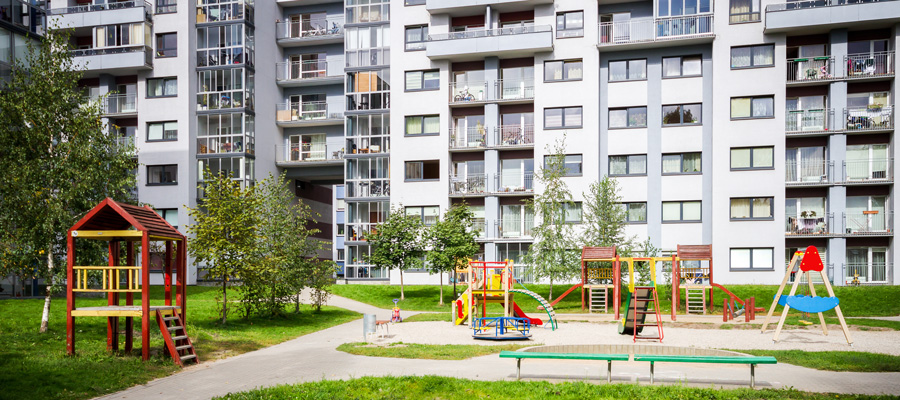How electoral reform enhances local representation

Debunking the claims of proportional representation naysayers
This is the third post in a series explaining the benefits of proportional representation and debunking myths from the ‘No’ side of BC’s 2018 electoral reform referendum. More from the series is available at policynote.ca/pr4bc.
Local representation in our democracy matters to a great many people, and so it should. While our current first-past-the-post (FPTP) electoral system has many faults, one of its most popular features is that every elected Member of the Legislative Assembly (MLA) represents—and, in theory, is accountable to—a local constituency or riding.
If we want to speak with a political representative about an issue, or need help dealing with a government matter, there is a local MLA whose office we can visit. We know who to talk to.
An all-too-common argument used to oppose changing our electoral system this fall is that a new system will diminish or end local representation.
In fact, the opposite is true.
All of the proportional representation (pro rep) options that will be on the referendum ballot preserve local representation, and indeed, I contend, enhance local accountability.
All of the pro rep options that will be on the ballot preserve local representation, and indeed, I contend, enhance local accountability.
In choosing what the pro rep options on the referendum ballot would be, BC Attorney General David Eby was guided by “four key principles,” namely:
- Proportionality: Any new electoral system must provide for generally proportional results, but not at the expense of other key principles and values identified in the public engagement.
- Local representation: A new system must respect British Columbians’ desire for local representation in all areas of the province, and balance the particular needs of urban and rural areas.
- Simplicity: It must not be too complex to be effectively communicated to voters or for voters to use if adopted.
- Size of Legislative Assembly: It must not require a significant increase to the number of MLAs.
All three pro rep options on the ballot meet these criteria. All preserve local representation (using, in part, a version of our current FPTP system), but also produce results that are proportional—a legislature that reflects our actual preferences. And all are innovative, made-in-BC versions of pro rep that accommodate the diverse nuances of BC, balancing local representation with proportional outcomes, as well as urban and rural interests.
Two of the proposed systems—Rural-Urban and Dual Member—are new innovations that are not in place elsewhere. The third, Mixed Member is better known, as various forms of it are currently employed in other countries. But even with this option, on offer for BC is a modified version of Mixed Member in which the list seats will be regionally based to bolster local representation.
In all three models, every MLA will be accountable to either a local riding or region. And in all three models, local ridings will only grow modestly in geographic size.
So why do I contend that these pro rep models actually enhance local representation? Because when thinking about what local representation actually means, what matters is both geographic proximity and political affinity.
FPTP does a good job of meeting our desire for MLAs whose offices are relatively close-by (the proximity goal). But political affinity? Not so much.
I’ll illustrate this point with a personal recollection. In 2001, Gordon Campbell’s BC Liberals won every seat in the Legislature except for two in East Vancouver. That election was the only time in the last half-century that a governing party actually secured an outright majority of the popular vote; with 57.6% of the popular vote, the BC Liberals won a sweeping 77 of 79 seats, and the BC NDP lost official party status (yet another example of the perverse outcomes of FPTP).
When thinking about what local representation actually means, what matters is both geographic proximity and political affinity.
The Campbell government then undertook a program of devastating austerity and made significant spending cuts to core public programs between 2002 and 2005. I recall travelling and speaking around the province in those years, and frequently hearing about local MLAs who, in the face of grassroots opposition to the cuts, had locked their doors and simply refused to grant meetings with local constituents. Meaning, it did not matter if you had an MLA with an office down the street—many British Columbians effectively did not have local representation.
Similarly, in the last BC election, the NDP won most of the seats in the largely urban south-west corner of the province, while the opposition Liberals won almost every seat in rural BC (despite the fact that all these areas are home to much more political diversity than our electoral system suggests). Our current system produces a distorted and divided political map of the province.
If you are a Liberal-inclined voter living on Vancouver Island, good luck finding a local MLA who shares your political views. If you are a Liberal supporter living in the interior, you likely have a local MLA who shares your views, but chances are your entire region is frozen out of Cabinet. Meanwhile, if you are a left-leaning person living in rural BC, you’re looking at a very long drive to find an MLA who shares your political affinity.
Surely we can secure of system of local representation that’s better than this.
All three of the pro rep models on offer this fall fix this problem, each in a unique way:
- With Dual Member, one MLA is the candidate whose party won the most votes in the riding, while a second local MLA is selected based on the provincial popular vote, ensuring the overall make-up of the Legislature reflects the popular vote. This way, we will no longer see whole regions with MLAs from only one party.
- Under Mixed Member, 60% of MLAs will be elected as they are now under FPTP (in slightly larger ridings), while 40% of MLAs will be drawn from regional party lists to ensure an overall proportional outcome. Again, we will no longer see whole regions with MLAs from only one party.
- Under Rural-Urban, rural areas will vote using the Mixed Member system, and urban areas will vote using the single transferrable vote (STV) in larger ridings with between five and seven MLAs. Again, each city and region is assured a mix of MLAs from various parties. (STV is the system British Columbians voted on in the 2005 and 2009 referenda. It has many strengths, but the main mark against it was that rural ridings would be too large. The Rural-Urban model fixes that weakness.)
Each option ensures you will have both a nearby MLA, as well as an MLA in relatively close proximity who shares your political values. In all three cases, people will have more than one local or regional MLA—so if you really don’t like one of your local representatives, don’t sweat it; you can go see another with whom you see more eye-to-eye.
The upshot: if you care about local representation—and you should—you have every reason to support changing our electoral system.
Topics: Democracy


